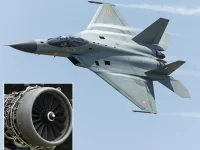- Views: 1K
- Replies: 7

In a move poised to significantly strengthen bilateral defence cooperation and enhance regional security, India has proposed integrating its indigenously developed Astra Mk1 Beyond Visual Range Air-to-Air Missile (BVRAAM) with the Vietnamese People's Air Force (VPAF) fleet of Russian-origin Su-27 and Su-30 fighter jets.
The VPAF currently operates 10 Su-27 Flanker and 35 Su-30MK2 multirole fighters, both acquired from Russia. The proposed integration of the Astra Mk1 would provide a significant upgrade to the VPAF's air-to-air combat capabilities.
The Astra Mk1, developed by India's DRDO, is a state-of-the-art BVRAAM designed to engage aerial targets at ranges exceeding the visual line of sight. It boasts advanced guidance systems, including an active radar seeker, enabling it to track and intercept enemy aircraft with high precision even in complex electronic warfare environments.
Astra Mk-1 has an operational range of approximately 80-110 kilometers, dependent on conditions, and travels at a speed of Mach 4.5, making it a formidable asset in aerial engagements.
The missile is already in operational service with the Indian Air Force (IAF), having been successfully integrated with its Su-30MKI fleet. With over 400 Astra Mk1 missiles inducted or on order, India has significantly scaled up production to meet both domestic and potential export demands. The Astra Mk1 will also be the primary BVRAAM for the IAF's Tejas Mk1A light combat aircraft, further solidifying its role in India's air defence strategy.
For Vietnam, the integration of the Astra Mk1 offers a considerable enhancement to its existing air combat capabilities. The missile's long-range engagement capability would provide the VPAF with a potent tool for both air superiority and defensive operations, particularly crucial in the context of potential regional disputes.
The Astra Mk1's superior performance characteristics compared to Vietnam's current inventory of Russian-made R-27 and R-77 missiles, which have a comparatively shorter range and older guidance technology. would significantly boost the operational efficiency of the VPAF in scenarios requiring long-range interception.
This proposal comes amid a growing strategic partnership between India and Vietnam, characterized by increasing defence cooperation. Both countries share concerns about regional stability, particularly in the South China Sea.
Vietnam, like India, has been modernizing its military in recent years to maintain a credible deterrent. This potential collaboration on the Astra Mk1 further underscores their commitment to enhancing their respective defence capabilities and fostering closer ties.
It's worth noting that DRDO is also developing more advanced versions of the Astra missile, including the Astra Mk2 with an extended range of 160 km and the Astra Mk3, which will employ solid fuel ducted ramjet (SFDR) technology for even longer ranges. This potential deal with Vietnam could pave the way for future cooperation on these more advanced versions as well.
The integration of the Astra Mk1 with Vietnam's Su-27 and Su-30 fleet, if it proceeds, would represent a significant milestone in India-Vietnam defence relations and could have substantial implications for the regional security architecture. While no official agreement has been announced yet, the proposal signifies India's growing role as a defence exporter and its commitment to supporting partner nations in strengthening their defence capabilities.



